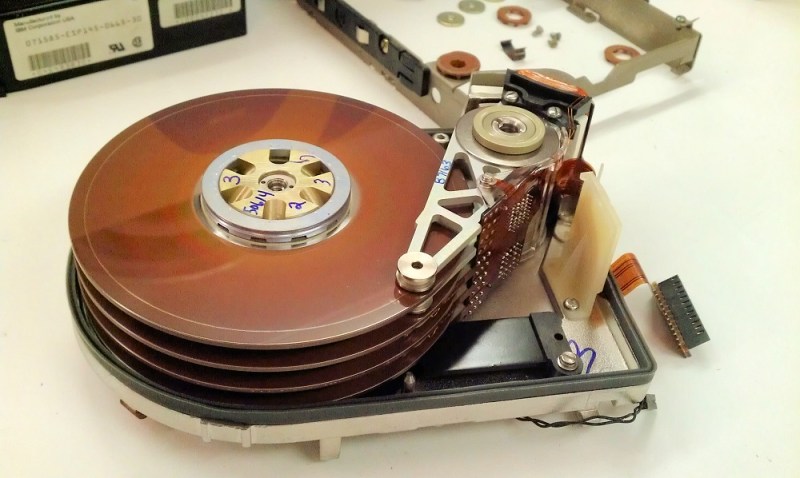In the electronics industry, the march of time brings with it a reduction in size. Our electronic devices, while getting faster, better and cheaper, also tend to get smaller. One of the main reasons for this is the storage medium for binary data gets smaller and more efficient. Many can recall the EPROM, which is about the size of your thumb. Today we walk around with SD cards that can hold an order of magnitude more data, which can fit on your thumb’s nail.
Naturally, we must ask ourselves where the limit lies. Just how small can memory storage get? How about a single atom! IBM along with a handful international scientists have managed to store two bits of information on two pairs of holmium atoms. Using a scanning tunneling microscope, they were able to write data to the atoms, which held the data for an extended period of time.
Holmium is a large atom, weighing in at a whopping 67 AMU. It’s a rare earth metal from the lanthanide series on the periodic table. Its electron configuration is such that many of the orbiting electrons are not paired. Recall from our article on the periodic table that paired electrons must have opposite spin, which has the unfortunate consequence of causing the individual magnetic fields to cancel. The fact that holmium has so many unpaired electrons makes it ideal for manipulation.
While you won’t be seeing atom-level memory on the next Raspberry Pi, it’s still neat to see what the future holds.
Thanks to [Itay] for the tip!
Via Gizmodo.
















If they’ve stored 2 bits of information on four atoms, isn’t the “single atom” headline a little disingenuous?
Something’s been lost in translation in the chain from paper to gizmodo to hackaday.
Original paper states “store two bits of information in an array of two Ho atoms”.
I could have sworn hearing about single-atom storage test of some kind or other at far back as the early 00’s. I wonder if this will also come to nothing any time soon…
I wonder how many copies of your data you really need to keep and how far apart to ensure data integrity, what RAID level?
It doesn’t change the fantasticness of the research, but it’s Holmium’s atom number that’s 67. The atom weighs in at just under 165 u.
An order of magnitude more data on an SD card than an EPROM? It’s more like six. :)
+1 from me
(so we now have a total of 7 orders of magnitude: 2K -> 32G
:o)
Comparing EPROM to SD…..
2708 were probably the first well known EPROMs and were 1KB. This was preceded by the Intel 1702 which was only 256B.
SD cards are now 8GB to 128GB readily available. Anything less than 8GB is scarce, and IIRC 256GB are available too.
That’s more like 7 orders of magnitude to me.
What is more amazing is the old 19″ 6 high platter hard disc (yep they were spelt disc back then) 10MB drives were the size of a washing machine, took a surge up to 40A at 240Vac to start, and cost about $16,000 in 1976. Compare that to a microSD 8GB card for $6.
512GB sd cards right on amazon for about $220… should work with sd to micrsd adapter (an SD adapter with a cable with a microsd card on the end of the cable) too if in use in a project etc…
CRICK A BAIT A ROO
Read this on IBM site it’s not as exciting as it sounds.
> weighing in at a whopping 67 AMU.
That’d be 165 AMU. 67 is its atomic number.